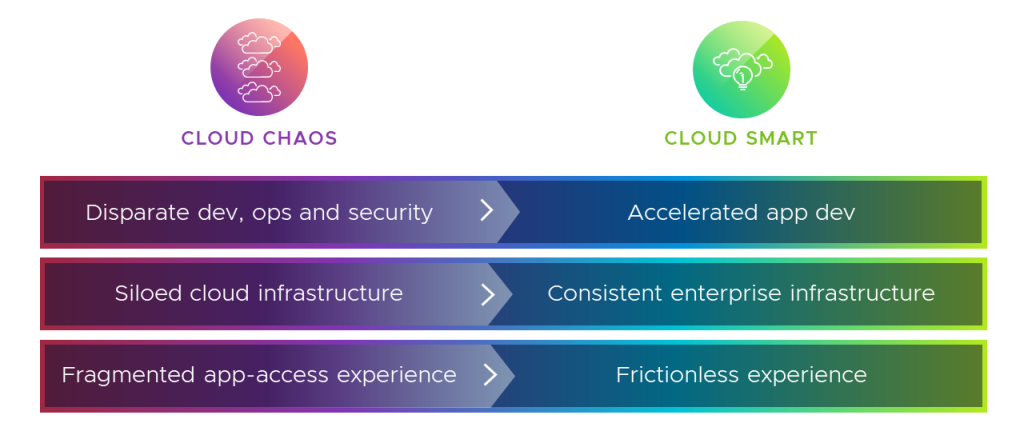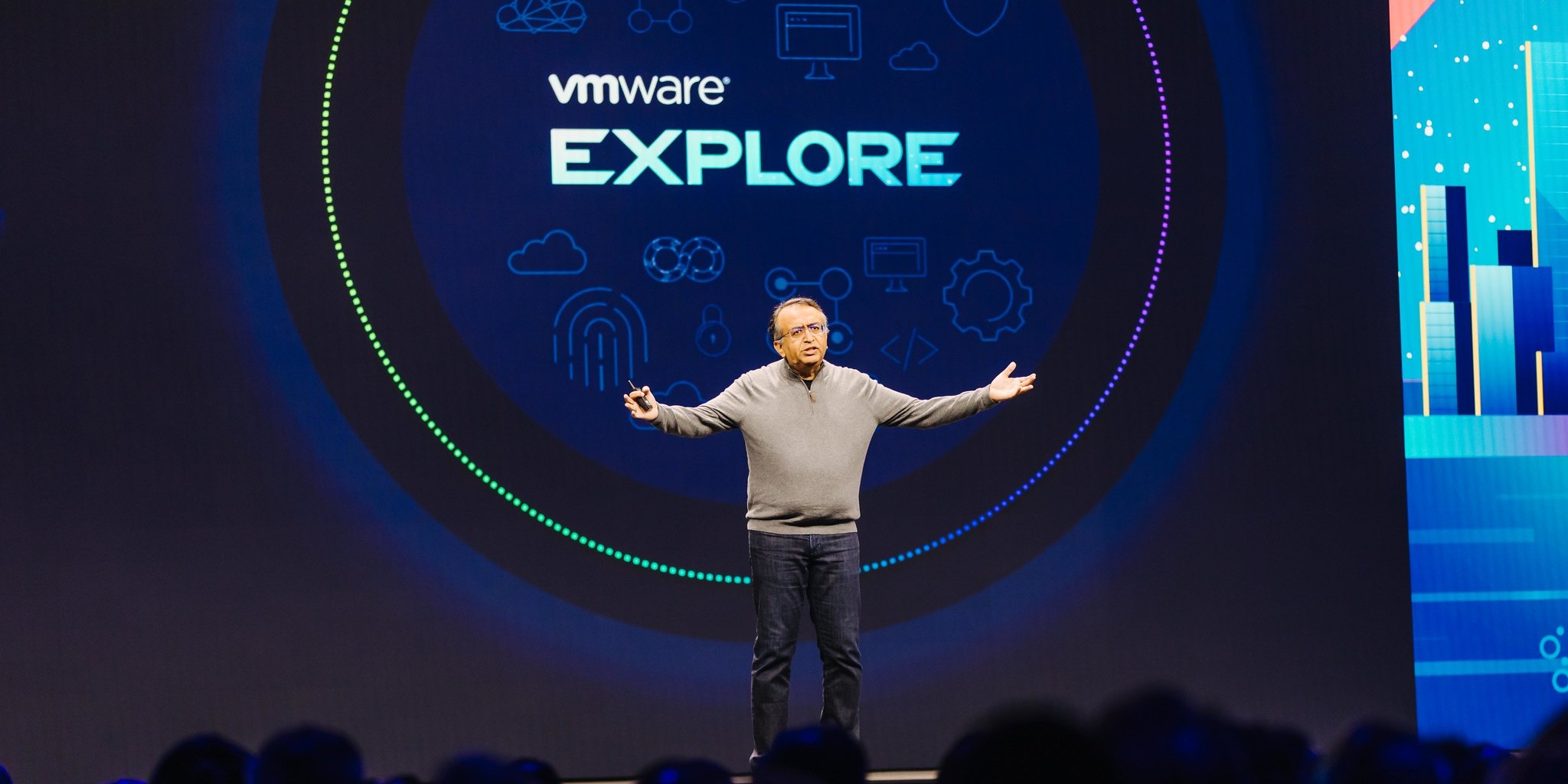Over the past decade, challenger brands have shaken up the status quo in the business world by pioneering a digital-smart strategy, centered on accelerating innovation via software in the cloud. There are unique qualities that distinguish a digital-smart business: an ability to harness machine learning to turbocharge business insights; a focus on taking automation to the next level; and an obsession with driving the next leap forward in employee engagement and productivity.
While challenger brands pioneered this digital-smart approach, established incumbents are investing heavily in every industry sector, from education and banking to healthcare, retail, and public sector. That explains the 400-percent growth in cloud-native apps over the past three years: from a total of 72 million in 2019 to an estimated 310 million cloud-native apps in the world today, according to IDC.1
The Great Re-Platforming
But while we’ve made progress on the path to digital, almost every business leader I talk to says the same thing: “We’re not moving fast enough.” Many CIOs describe this current era as ‘The Great Re-Platforming’ of the enterprise – an opportunity to rethink and reshape the core operations that propel every business. In their view, this re-platforming has slowed, and they call out three roadblocks that are holding us back. First, we’re confronting a global-scale gap in critical skills, from software-development to cloud operations. Second, there’s the sheer ‘weight’ of existing enterprise apps, which have proven difficult to modernize and migrate to the cloud. The third roadblock is the fragmented nature of running and securing apps across multiple clouds.
Against that backdrop, organizations have discovered that successfully re-platforming the enterprise requires you to build a “cloud-smart” architecture – one that allows your teams to navigate the inherent complexity of today’s multi-cloud world. At the core of a cloud-smart approach is the ability to drive a consistent, secure, and cost-efficient operating model across the various clouds you rely on.
A survey we conducted this Summer with more than 5,000 organizations across the globe revealed that only 20 percent have reached the tipping point where the strategic benefits of multi-cloud outweigh the challenges, including spiraling costs and cyber-security vulnerabilities.2 In other words, only one in five businesses identify themselves as cloud smart today. What is the right path forward for the remaining 80 percent of organizations that want to implement a cloud-smart approach?
A Typical Journey to Cloud
In my conversations with customers, they consistently describe a journey to the cloud that breaks down into three distinct phases:
Phase 1: Cloud First – This was the initial embrace of public cloud that began a dozen or so years ago, with a big focus on building customer-facing mobile apps in a single cloud. This first wave of cloud innovation drove huge advances in how businesses operate and how they engage their end customers.
Over time, we saw a broad shift from a single-cloud mindset to a multi-cloud model, with 75% of organizations now relying on 2 or more public clouds.3 This makes a lot of sense for a variety of reasons. First, CIOs want to tap into the tremendous amount of innovation being driven by the leading public-cloud players. Developers want access to best-of-breed services in different clouds to differentiate the apps they’re building. And every organization wants greater choice and flexibility, which helps them avoid lock-in with a single service provider.
Phase 2: Cloud Chaos – This describes the current state that 80 percent of organizations are living and breathing each day, a world where greater cloud choice has led to a massive spike in complexity. Most report that building new apps is slow and cumbersome, and managing their entire app portfolio across disparate clouds is difficult and expensive. No wonder: each cloud requires their teams to use proprietary tools that are siloed and incompatible with one another. Meanwhile, for the average employee, getting fast, secure access to critical apps from anywhere is imperative, yet it’s often a challenge. All this complexity has broad repercussions on the business, from managing costs to attracting and retaining top talent.
Phase 3: Cloud Smart – This is the desired destination of every multi-cloud journey: a more sophisticated, mature approach where you have the freedom to select the right cloud for the right app, based on the needs of the individual app. Customers I talk to who have successfully achieved a cloud-smart approach tend to describe three big shifts they drove as part of their move from Cloud Chaos to Cloud Smart:

Cloud Smart in Action: S&P Global
One of my favorite examples of a company accelerating innovation via a cloud-smart approach is S&P Global, a well-respected brand and a leader in business-intelligence services. Like many organizations, they were struggling with complexity, cost and the “need for speed” along their multi-cloud journey.
They embraced multi-cloud — and partnered with our team at VMware to get the most out of their multi-cloud investments. Today, they’re focused on improving the developer experience to both build solutions quicker for their customers, and move at the speed of business.
Business Outcomes from a Cloud-Smart Approach
When we asked cloud-smart organizations to describe the benefits they’ve gained from their multi-cloud operation, they spoke of advantages that shape both their competitiveness and their top-line results. For example, 97 percent of cloud-smart organizations say their approach to multi-cloud has improved their revenue growth4, and 96 percent say it has improved their profitability.5 At the same time, 96 percent of cloud-smart organizations say they are better able to recruit and retain top talent6, and 92 percent report that it’s easier to manage their data wherever they reside.7
The Ultimate Destination
Moving from a state of cloud chaos to a position of strength as a cloud-smart organization is neither simple nor easy. There’s a lot we can learn from the small subset of businesses that have successfully navigated this transition. Whether you’re a challenger born in the cloud or an established player, the ultimate destination is a multi-cloud environment that empowers your teams to move faster and spend less – powered by a consistent operating model that extends across any cloud. This is the foundation of a digital-smart business.
Watch Raghu Raghuram’s keynote from VMware Explore where he outlines the vision for cloud smart as the destination of every multi-cloud journey.
12019: IDC, 500 Million New Logical Applications: More Background, IDC #lcUS45622019, November 2019; 2022: IDC, 750 Million New Logical Applications: More Background, Doc # US48441921, December 2021
2-7VMware survey of 5,000 organizations globally, July 2022

